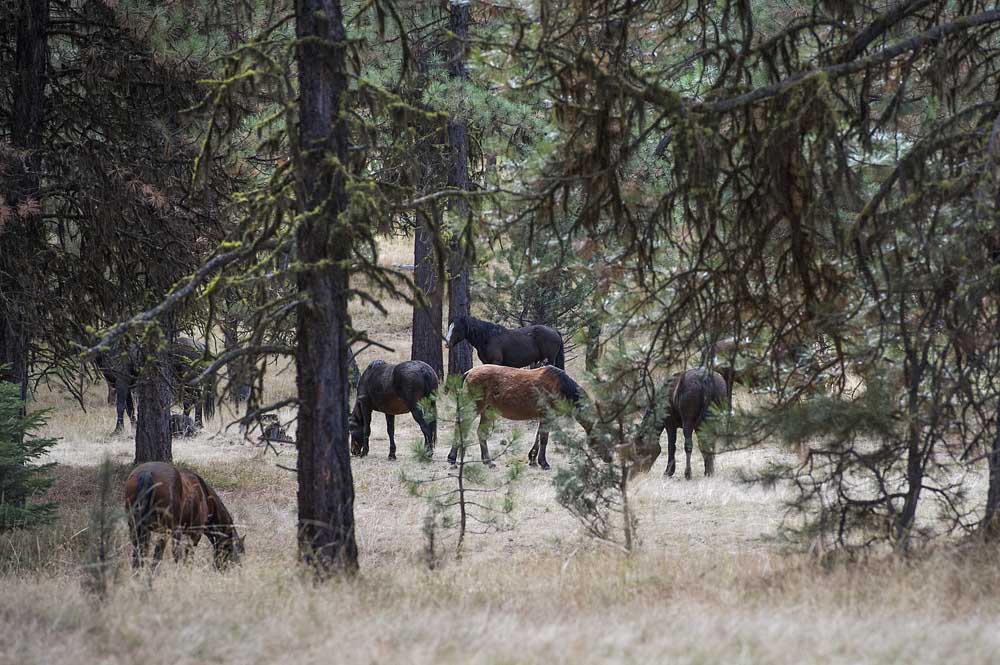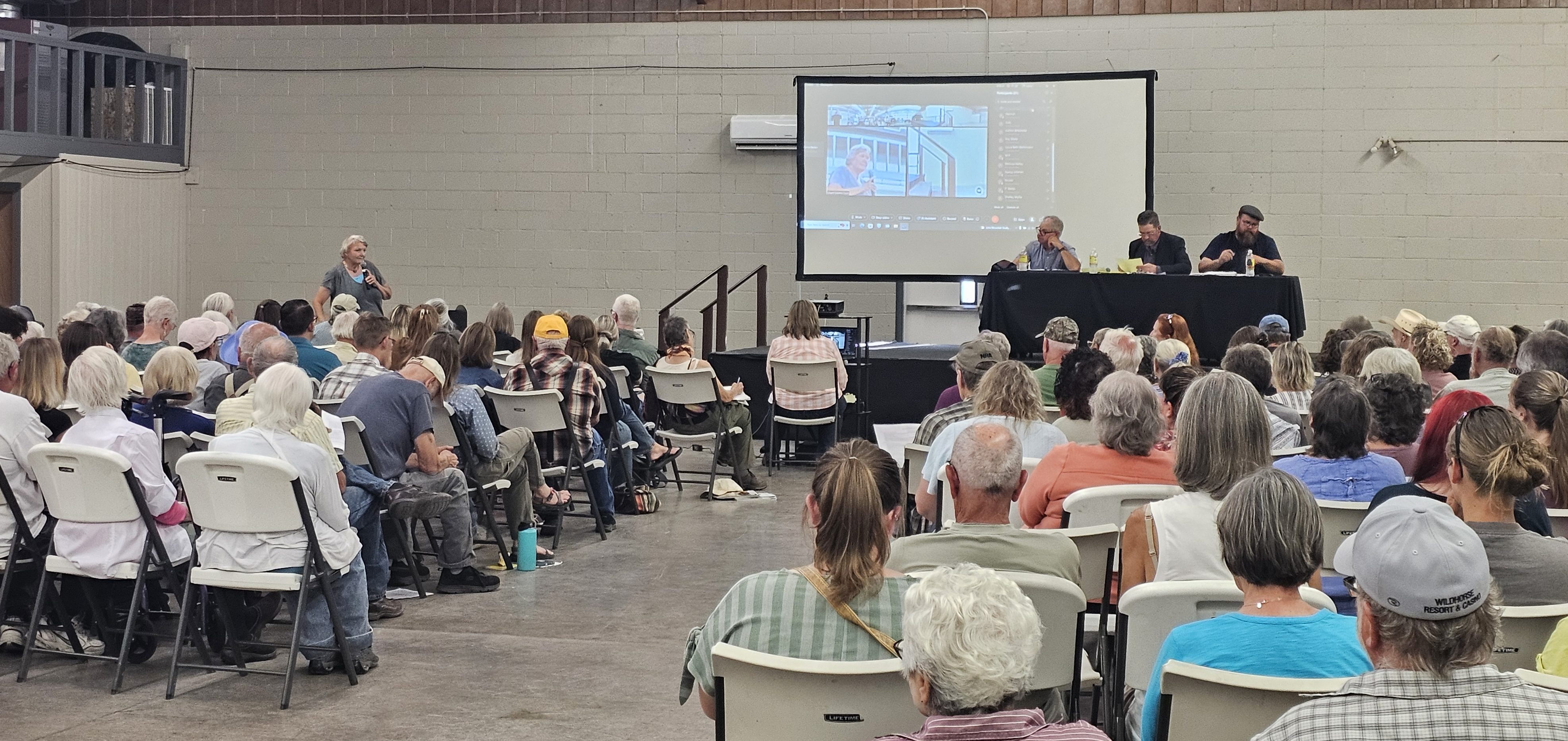Forest Service mulls cutting wild horse numbers in the Ochocos
Published 1:45 pm Wednesday, December 2, 2020

- A herd of feral horses graze in the Ochoco National Forest near Prineville in 2018.
A herd of feral horses that grazes on land within the Ochoco National Forest could have its numbers slashed if a new management plan for the horses is adopted.
Trending
The appropriate management level of horses in the Big Summit Wild Horse herd is 12 to 57 animals, according to a plan released by the Ochoco National Forest. Currently, the herd includes around 135 horses.
The Big Summit herd is unique in the Pacific Northwest as it’s the only one in Oregon and Washington to be managed solely by the U.S. Forest Service. The Bureau of Land Management is responsible for most of the wild horse herds in other areas of Oregon.
The herd is located about 30 miles east of Prineville and grazes on 27,000 acres of land located between 4,000 to 7,000 feet in elevation.
Trending
A 1975 management plan set the number of horses in the area at around 60. When numbers exceeded that amount, the Forest Service worked with the Bureau of Land Management to transfer horses to a facility near Burns. Funding for that agreement ended in 2013, and since that time, the Forest Service has witnessed a dramatic growth in the herd.
In its updated management plan, the Forest Service says it aims to keep the number of horses at the “high end” of the appropriate management level.
The numbers will be maintained through contraception and sterilization. Contraception includes tools such as PZP, an immunocontraceptive vaccine. Other methods to slow population growth will also be considered, but only if approved by the Wild Horse and Burro Advisory Board or other governing agencies, according to details in the Forest Service plan.
DNA samples will also be collected to ensure that the herd maintains an acceptable level of genetic variability. New mares from similar habitats will be introduced if it’s determined that greater genetic variability is required.
“By importing wild horse mares from source herds as recommended by genetic experts, we expect to improve the genetic variability,” according to the management plan.
Excess horses will be removed by gathering them together and trapping animals. Trapped animals will then be prepared for adoption or sale, according to the management plan.
The Forest Service says it needs to reduce the number of animals to protect forest ecology, which is at risk of being overgrazed if the numbers of wild horses remain at current levels. The management plan specifies that riparian areas, where the horses graze in winter, are particularly vulnerable.
After the number of horses is reduced “it is expected that riparian conditions may improve and stream form and function are also expected to improve,” according to the plan.
In addition to protecting the ecology, it is believed that the larger numbers are not sustainable in winter, when grass is difficult to access through the snow.
In its plan, the Forest Service acknowledged that wild horses have survived harsh winters at population numbers above the proposed management level. However, the report states that riparian areas suffered damage from overgrazing during those periods. It adds that “less than desirable body conditions” were evident on some of the horses that survived the harsh winters.
The Forest Service decision was based on consultations with wildlife agencies, which consider the needs of all species in the area. Based on those discussions, the Forest Service determined that the size of the current herd could threaten other species by depriving them of forage.
The 1975 management plan in current use recommends the herd be maintained at 60 horses, and does not allow numbers to fluctuate based on changes in climate, available forage or resource conditions.
The new proposal states the determination is based on the best available science but adds that the suggested changes have provoked public controversy.
“Although some aspects of wild horse management are socially controversial, there is no evidence to demonstrate a substantial dispute within the science community about the effects as described in the Environmental Assessment,” the report states.
Gordon Clark, 87, a Jefferson County rancher who supports the Forest Service plan, agrees with scientific claims that too many horses can cause environmental degradation and put other species at risk.
“Would the general public rather see an elk or a deer or a horse in the forest? The horses are the alpha species so they push the elk and the deer out of the area,” said Clark. “The horses really overgraze that area; they are bad for the forests.”
Clark does have a stake in the decision. For more than two decades he grazed sheep in the Big Summit area with an agreement from the Forest Service but stopped three years ago when the number of wild horses increased. Since 2014 Clark has been advising the Forest Service that the grazing plan was “falling apart.”
“The horses use certain areas a lot, especially in the winter, and the horses use random grazing patterns,” said Clark. “There is nothing uniform. The horses go to one place one summer then another place another summer. So grazing allotments are gone. They don’t work anymore.”
Opponents to the plan argue that winter conditions do not pose a threat to the horses. Frank Porfily, a Prineville resident, says he has observed the horses over the past five years and does not believe their increased numbers are a problem.
“I have not observed a lack of forage in the area,” said Porfily. “During the winter of 2016 with four feet of snow, the horses still made it. I watched them eat leaves off of trees, dig grass out with their hooves and survive by digging out food.”
The plan is currently in an objection period during which people who made previous comments can comment again. In April and May, the Forest Service received 126 comment letters from individuals and organizations. More information on the plan is available from Beth Peer (541-416-6463, beth.peer@usda.gov), the Ochoco National Forest environmental coordinator.









